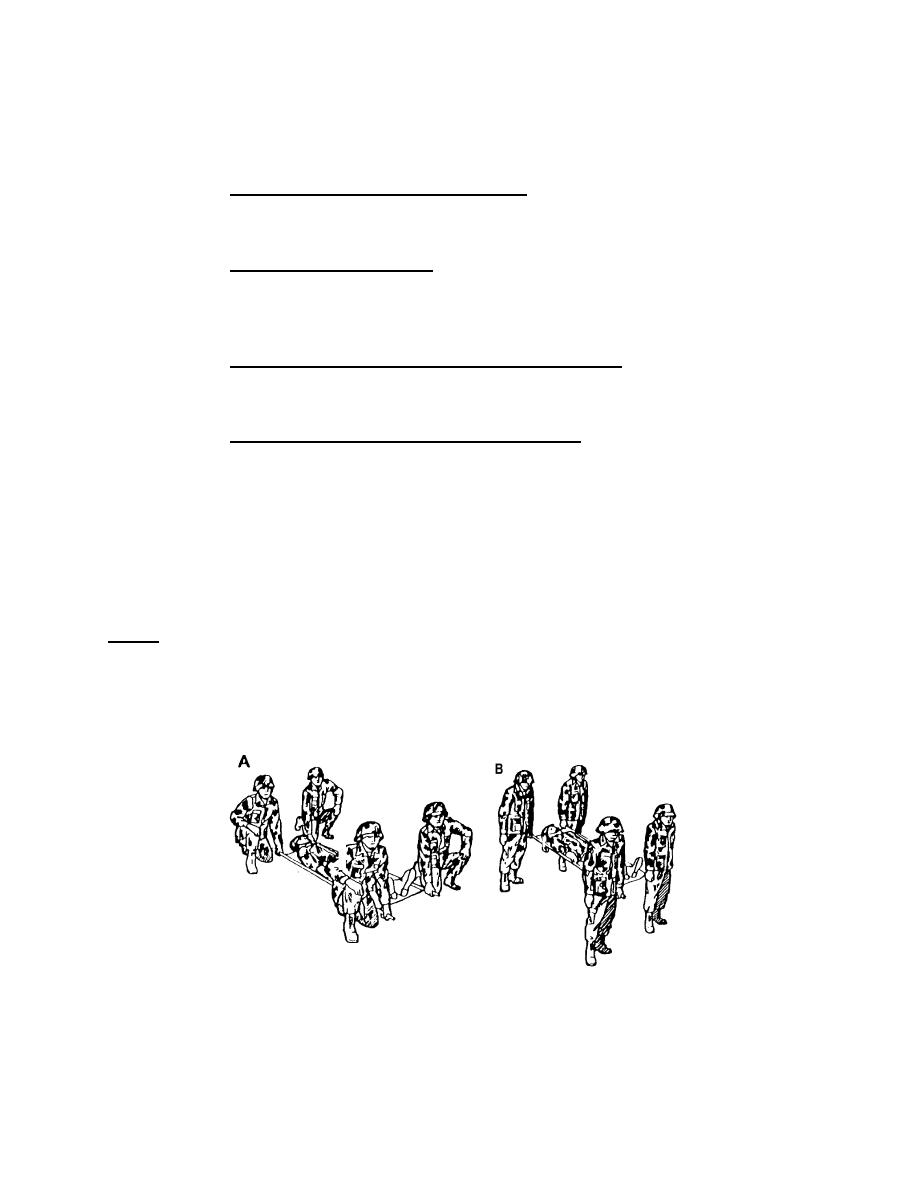
7-12. TRANSPORTING A CASUALTY ON A LITTER
a. General Rules
(1) Explain the procedure to the casualty. If the casualty is conscious, tell
him what you are going to do. The explanation will help to calm his fears and will help
you to get his cooperation.
(2) Walk around the casualty. Walk around the casualty rather than
stepping over him. If you step over the casualty, he may flinch or tighten his muscles
and aggravate his injuries. In addition, mud or other debris from your boots may fall into
his eyes or wound.
(3) Perform necessary measures before transporting. Make sure the
casualty is breathing properly, that open wounds have been dressed and bandaged,
and that fractures have been splinted before transporting the casualty.
(4) Have one person in charge of the litter team. One person must give the
instructions to the remainder of the team so actions will be performed in unison.
b. Preparing to Lift the Litter. If there are four litter bearers, each bearer
positions himself at one of the handles, faces so that the casualty will be carried feet
first, kneels on the knee nearest the litter, and grabs the litter handle (figure 7-13 A).
The leader of the litter team should position himself at the handle nearest the casualty's
right shoulder and direct the other bearers. This position allows the leader to monitor
the casualty during the evacuation.
NOTE:
The combat medic may instruct the litter team to carry the casualty head first
based upon the casualty's injuries.
c. Lifting the Litter. Upon command of the leader, the four litter bearers lift the
litter in unison (figure 7-13 B) and transport the casualty to the aid station, collection
point, or other destination.
Figure 7-13. Lifting a casualty using a four-man litter team.
IS0877
7-14


 Previous Page
Previous Page
